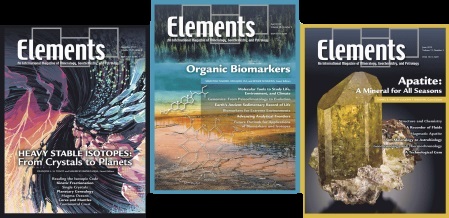The unusual structural properties of the Fe-Mg serpentine minerals permit significant chemical variability, but the mechanisms and extent of elemental substitution have only recently come to light. New results show that greenalite forms solid solutions with the Fe(III) end-member hisingerite, cronstedtite, and Mg-serpentines, with the composition depending on formation conditions. Leveraging this new mineralogical context enables quantitative estimation of H₂ production on Earth and Mars. Together, these advances indicate that greenalite solid solutions in ancient rocks produced and released H₂ and thus contributed to planetary habitability. Examination of Martian rocks and analogous Earth materials shows greenalite-hisingerite minerals were responsible for H₂ fluxes to the ancient Martian atmosphere and could be important contributors to planetary habitability throughout the Solar System.
This content is for Registered members only. To subscribe, please
join one of our participating societies or contact the Editorial Team.

